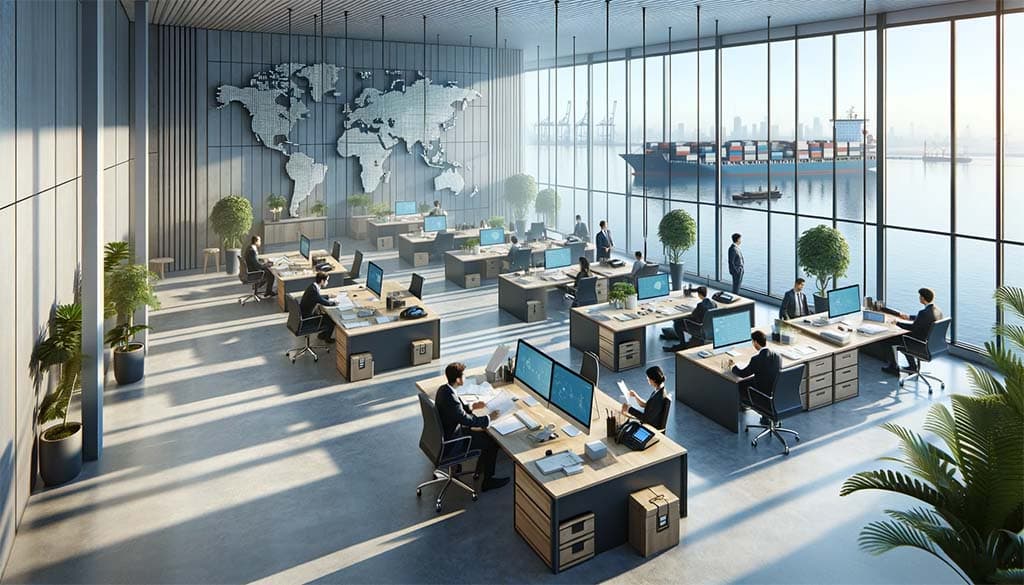
Trade policies are essential frameworks that govern international trade and economic agreements between countries. These sets of laws and regulations define how goods and services move across borders, influencing everything from pricing and supply chains to diplomatic relations. They can either liberalize trade by reducing restrictions, thereby promoting a more globalized economy, or protect domestic industries through tariffs and quotas. The importance of understanding these policies cannot be overstated, as they have direct implications for economic health, job creation, and consumer welfare. For individuals navigating the global marketplace, whether it be through platforms like JPMorgan Chase (read here how to login their My Rewards At Work)or international investment opportunities, a grasp of these policies is critical. As we explore the nuances of trade policies, their history, and their impact on the global economy, readers will gain a comprehensive view of how nations strategize their economic growth and sustain competitive advantages in the complex web of global trade.
The Historical Context of Trade Agreements
Throughout history, trade agreements have been pivotal in forging alliances and fostering economic growth. They have evolved from the mercantilism of colonial times, where the wealth of nations was seen as finite and to be jealously guarded, to the modern era’s complex web of multilateral trade agreements, which aim to promote mutual economic prosperity through more open borders. Each era’s trade policies have been a reflection of the prevailing economic thought and geopolitical realities of the time. For instance, the post-World War II period saw a significant push towards reducing trade barriers, as countries recognized the need for a cooperative approach to rebuild economies and prevent conflicts. The establishment of international bodies to oversee trade relations further facilitated this trend towards globalization. However, the recent rise of protectionist sentiments is a reminder that the tides of trade policy are ever-changing, influenced by national interests, political ideologies, and economic challenges.
Protectionism vs. Globalization
The debate between protectionism and globalization has long been a defining aspect of trade policy discourse. Protectionism, the practice of shielding a country’s domestic industries from foreign competition by taxing imports, is often employed during times of economic turmoil or when industries are in their nascent stages. Conversely, globalization advocates for the elimination of trade barriers, allowing for an unfettered flow of goods, services, and labor across borders. This approach has been credited with spurring innovation, fostering competition, and reducing prices for consumers. However, it has also been critiqued for contributing to the decline of manufacturing jobs in developed countries and for perpetuating inequalities. As we dissect these opposing viewpoints, we also consider the practical outcomes of trade policies on the ground. Companies and consumers alike must understand the implications of these complex economic dynamics in order to make strategic decisions that align with their interests and values.
The Role of Tariffs and Trade Barriers
Tariffs and trade barriers serve as the tools through which countries can control the influx and outflow of goods. By imposing tariffs, governments can raise the cost of imported goods to discourage consumption and protect domestic industries. Similarly, non-tariff barriers, such as quotas and embargoes, can restrict the volume or nature of goods that enter a country. While these measures can be effective in safeguarding local jobs and industries, they can also provoke retaliation from trading partners and escalate into trade wars, which generally have far-reaching negative effects on the global economy. Moreover, while protecting certain sectors, they might inadvertently harm others by increasing production costs and limiting access to competitive foreign markets. The delicate balance that policymakers must maintain between protecting their domestic economies and engaging in beneficial international trade is a recurrent theme in economic strategies across the globe.
Economic Theories Behind Trade Policies

The design and implementation of trade policies are often guided by economic theories that have been developed and refined over centuries. Classical theories, like the comparative advantage theory, suggest that countries should specialize in producing goods where they have a lower opportunity cost, leading to increased efficiency and mutual gains from trade. Contemporary theories, on the other hand, may focus on the role of technology and innovation in trade and suggest strategies for nations to climb up the value chain. These theories provide a blueprint for understanding the potential outcomes of different trade policies and help governments navigate the complex landscape of international commerce. As we delve into these theories, we unravel the rationale behind various policy decisions and their intended as well as unintended consequences.
Trade Policies and Employment Dynamics
One of the most critical aspects of trade policies is their impact on employment. The promise of trade agreements is that they will open up new markets for domestic companies, potentially leading to job creation and economic growth. However, the reality is often more nuanced, with some sectors experiencing job losses due to increased foreign competition. The shifting of manufacturing bases to countries with lower labor costs is a testament to this dynamic, as is the burgeoning service sector in many developed economies. Policymakers must therefore design trade policies that not only enhance the competitive edge of their industries but also incorporate measures to mitigate the adverse effects on employment. Skills training, education, and transition programs become key components in ensuring that the workforce adapts to the changing economic landscape.
Case Studies: Trade Policies in Action
Analyzing real-world examples of trade policies provides concrete insights into their effectiveness and repercussions. This section would dive into specific cases, such as the impact of NAFTA on North American economies, the consequences of China’s entry into the WTO, or the effects of the European Union’s single market on member states. By examining these scenarios, we can better understand the complex interplay between trade policies and economic outcomes and learn from past successes and mistakes.
Trade Policy Reforms and Economic Growth
Reforming trade policies can be a significant driver of economic growth. By reducing trade barriers, countries can increase market access for their goods, encourage foreign investment, and spur innovation through exposure to global competition. However, reforms must be carefully calibrated to ensure that the benefits are widespread and that vulnerable sectors and populations are protected. The role of international trade negotiations, the impact of digitalization on trade, and the increasing importance of intellectual property rights in trade policy reforms are all crucial factors that influence the trajectory of economic development.
Navigating Trade Policies: A Guide for Businesses
For businesses, understanding and navigating trade policies is vital for success in the global market. This entails not only compliance with existing regulations but also active engagement in shaping future policies. Companies must stay informed about potential changes in trade agreements and adapt their strategies accordingly. Moreover, businesses can benefit from understanding the nuances of trade policy to advocate for conditions that favor their growth and sustainability.
Conclusion: The Future of Trade Policies
As the global economy continues to evolve, so too will trade policies. Technological advancements, shifts in political ideologies, and changing economic conditions will all influence the direction of future policies. It is essential for governments, businesses, and individuals to stay informed and engaged in the dialogue surrounding trade policies to navigate the challenges and opportunities that lie ahead.